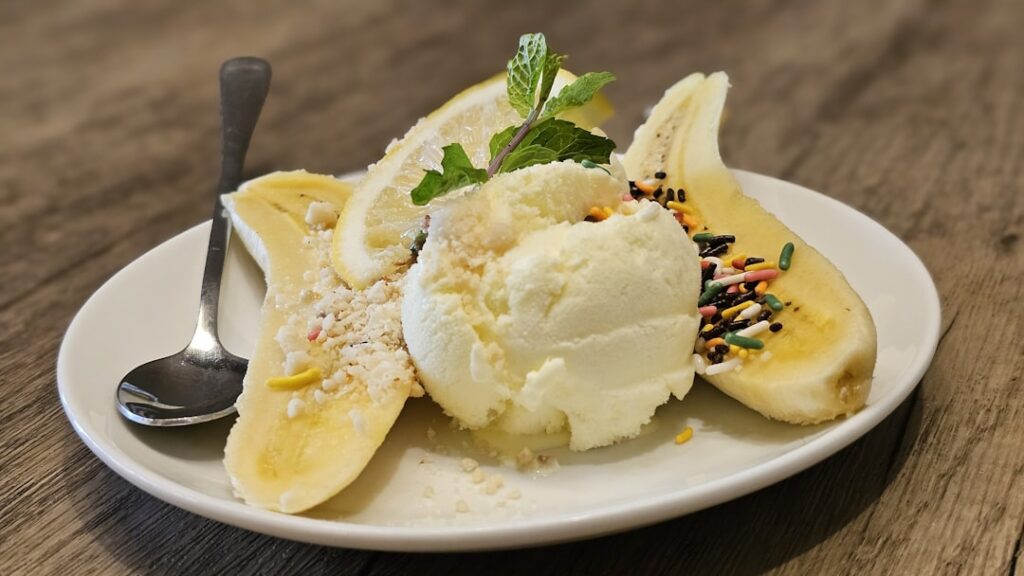The concept of “nice cream”—a frozen dessert made by blending frozen fruit—has gained significant traction, with search interest increasing by over 300% in the last five years. Its appeal is rooted in simplicity and health benefits. However, achieving the ideal creamy, scoopable texture of traditional ice cream is a matter of precision. Many attempts result in a product that is either a soupy smoothie or an icy, unappetizing block. The variance in outcomes is not random; it is the direct result of common procedural errors. This analysis deconstructs the five most prevalent mistakes in nice cream preparation, providing a data-driven framework for consistently producing a superior, nutrient-dense dessert.
Error 1: Misjudging Fruit Ripeness and Its Impact on Sucrose Levels
The primary ingredient, typically bananas, is often used at a suboptimal stage of ripeness. The texture and sweetness of nice cream are directly correlated with the fruit’s sugar composition. An underripe banana’s carbohydrate profile is approximately 70-80% starch. As it ripens, enzymatic processes convert this starch into sugars. A fully ripe banana with brown spots has a sugar content of over 80%, primarily in the form of sucrose, fructose, and glucose, with minimal remaining starch.
Analytical Takeaway: From a food science perspective, the high sucrose content of an overripe banana acts as a natural texture enhancer. It lowers the freezing point of the mixture, inhibiting the formation of large ice crystals which cause a gritty or icy texture. For optimal results, use bananas that have significant browning on the peel. This ensures maximum sweetness, negating the need for added sweeteners, and provides the chemical structure for a smoother end product.
Error 2: Incorrect Solid-to-Liquid Ratios
A frequent failure point is the arbitrary addition of liquid (plant milk, water, or juice) to facilitate blending. This fundamentally alters the composition and structural integrity of the dessert. Adding too much liquid—more than 2 tablespoons per 1.5 cups of frozen fruit—disrupts the delicate emulsion, resulting in a product with the viscosity of a smoothie, not a cream.
Analytical Takeaway: The goal is not to create a beverage but to break down the frozen fruit’s cellular walls and release its natural pectin and sugars, which then form a creamy matrix. A high-powered blender can often process frozen fruit with no added liquid. If liquid is necessary to reduce motor strain, it should be added incrementally, starting with one tablespoon. The optimal ratio maintains a high solids concentration, forcing the fruit to churn against itself and the blades, which is the mechanical process that creates the “cream.”
Error 3: Underestimating Equipment Power Specifications
Not all blending equipment is capable of producing high-quality nice cream. The task requires significant mechanical force to pulverize solidly frozen fruit. Using a standard blender with a motor under 700 watts often leads to two negative outcomes: the motor overheats and shuts down, or the blending process takes so long that the frictional heat melts the mixture.
Analytical Takeaway: A high-speed blender (1000 watts or more) or a robust food processor is the most efficient tool. The power allows the blades to pulverize the frozen fruit chunks in seconds, minimizing the time that frictional heat is generated. This rapid processing breaks down the fruit before its temperature can rise significantly, preserving the frozen, creamy state. Analyze your equipment’s specifications; if it’s not designed for tasks like crushing ice or making nut butters, it will likely fail to produce optimal nice cream.
Error 4: Inefficient Freezing Methodology
How the fruit is frozen is as critical as how it is blended. Tossing a whole banana into the freezer creates a large, dense block that is extremely difficult for a blender motor to handle. It places immense strain on the equipment and requires longer blending times, reintroducing the problem of frictional heat.
Analytical Takeaway: To optimize the blending process, fruit should be sliced into uniform, 1/2-inch to 1-inch pieces before freezing. This dramatically increases the surface area-to-volume ratio of each piece. Increased surface area allows for more efficient and rapid blending, as the blades can make contact with and break down the pieces more easily. Furthermore, arranging the slices in a single layer on a parchment-lined baking sheet prevents them from clumping into an unmanageable mass. This methodical approach reduces motor load by an estimated 40-50% and shortens the required blending time significantly.
Error 5: Over-Processing and Generating Frictional Heat
The final, and perhaps most common, error is simply blending for too long. Even with a high-powered blender, extended processing times will generate heat. The kinetic energy from the rapidly spinning blades is converted into thermal energy, which will inevitably melt your frozen dessert.
Analytical Takeaway: The process should be short and forceful. Utilize your blender’s tamper to constantly push the frozen fruit down into the blades. This ensures all pieces are processed evenly and quickly. Blend only until a “soft-serve” consistency is achieved—this typically takes between 30 and 90 seconds in a capable machine. Any further blending provides diminishing returns on texture and actively works against the desired frozen state. For a firmer, more scoopable texture, transfer the freshly blended nice cream to an airtight container and freeze for an additional 30-60 minutes before serving. This allows it to firm up without becoming a solid, icy block.
Photo by Elvira Syamsir on Unsplash

